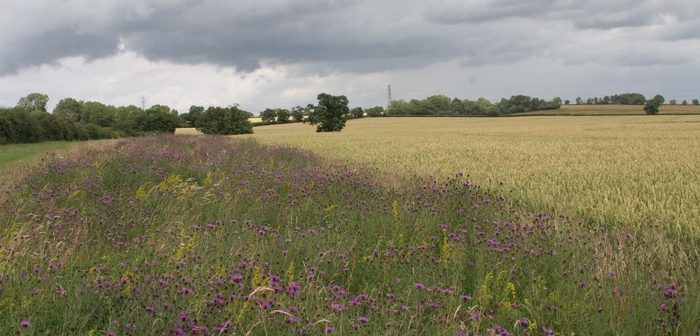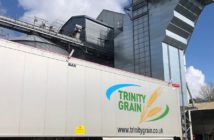Basing new Environmental Land Management Scheme (ELMS) payments on the age-old income foregone formula is unnecessary and will fail to deliver the desired public goods, warns a leading agricultural policy adviser.
“Other than lack of imagination and ambition, there is absolutely no reason to continue with the simplistic formula of the past,” stresses consultant economist, Simon Ward of The Policy Group, specialising in the impacts of change on the agricultural and food industries.
“The one-size-fits-all income foregone calculation is totally inadequate because it fails to account for variations between different farms; and, even more importantly, the risk to which growers are exposed as a result of the much greater amount of time required to establish small areas of wildlife habitat compared to equivalent areas of crop.
“The calculation may reflect the difference in cost, but it completely fails to account for the income actually foregone, particularly in a difficult year,” he argues. “So, it provides little incentive for sort of ELMS uptake that would really make a difference.”
Mr Ward sees quite enough flexibility for ELMS payment rates to be set at a level that will encourage environmental improvements by realistically compensating farmers for actual income losses even within non-trade distorting ‘green box’ World Trade Organisation (WTO) rules on state aid.
This is mainly because paying to put productive land into environmental options will limit – not promote – national agricultural production, increasing the UK’s reliance on imports. So, any complaint to the WTO on the grounds of unfair trade distortion would be most unlikely, and even more unlikely to be upheld.
“In any case, payments only have to be based on income foregone if included as green box,” points out Mr Ward. “Instead, they could easily be classified as amber box, like current BPS payments for cross-compliance which are substantially more than their additional true cost to growers.
“Within the national ceiling the rules allow for amber box payments, we have increasing headroom to do this as BPS is progressively reduced,” he notes. “We also have the opportunity to allocate different parts of ELMS payments to different categories. And, as payments to achieve particular environmental outcomes, there is actually no reason they need to be treated as subsidies anyway.”
Under these circumstances, Simon Ward has no doubt that the UK has considerable discretion to make much more appropriate environmental payments than simple income-foregone calculations allow without opening a can of worms in trade terms.
He suggests payments could easily reward growers for the true cost of environmental improvements, and be varied with the quality of land and the ability of different farming systems to accommodate them.
“What we expect from Government is imaginative thinking to square the circle between environmental enhancements and appropriate rewards for making them,” he concludes. “Which is surely what payment for results in delivering public goods should be all about.
“There is no reason for Defra or Natural England to hide behind income foregone any longer. This just shows a lack of understanding and ambition.”
Panel
Dare to be different, urges farmed wildlife specialist
If we don’t do something different, there is no reason to believe anything will change, reasons one of the country’s foremost farmed wildlife specialists. And, to date, he sees the record of successive schemes in achieving the sort of sustained improvements in farmland bird, bee and other wildlife populations he knows to be possible as mixed, to say the least.
“All my work with farmers and scientists over nearly 40 years underlines the impressive scale of environmental improvements that can be made within profitable modern farming systems,” says independent consultant Marek Nowakowski who leads the Agrii environmental team.
“In comparison, the gains we have seen from the best part of 30 years of environmental payments to date have been sadly disappointing.
“The practical research I have been involved in proves far higher wildlife gains are possible when the right quality habitats and management are employed. Success here has depended upon the right level of support provided in the right way with the right understanding. And, crucially, on not under-estimating either farmers’ abilities or their enthusiasm.
“The environmental courses Agrii run for land-owners and managers across the country show effective training and sufficient incentive must go hand-in-hand for successful farm habitat delivery.
“Once they understand the fundamentals of habitat creation and management and see for themselves the difference they can make, farmers are hugely enthusiastic about wildlife improvement and very good at achieving it. They take pride in the improvements they make and have a far greater ability and interest in doing so than most outside farming appreciate.
“On the other hand, we know from bitter experience that prescriptive ‘solutions’ inappropriate for specific farm circumstances offered without sufficient understanding or support are a recipe for disaster.”
Mr Nowakowski urges those developing ELMS to take full advantage of the flexibility they have to make payments appropriate to the task in hand; implement the new scheme with a practical understanding of how best to integrate quality habitat creation with commercial farming; and deliver it with sufficient hands-on training.
Only by doing this, he insists, we will be able to achieve the scale of environmental improvements both necessary and possible alongside the profitable farming vital to sustain them in an increasingly challenging post-Brexit world.
“Our own experience and the millions of pounds worth of Defra-financed environmental research to date provide ample proof of what can be done with the right approach” he observes.
“Time is not on our side. So, we must make more use of past knowledge and ensure farmers are properly rewarded for quality wildlife delivery. We can’t let inadequate payments continue to distort habitat selection and reduce environmental improvement progress.”




